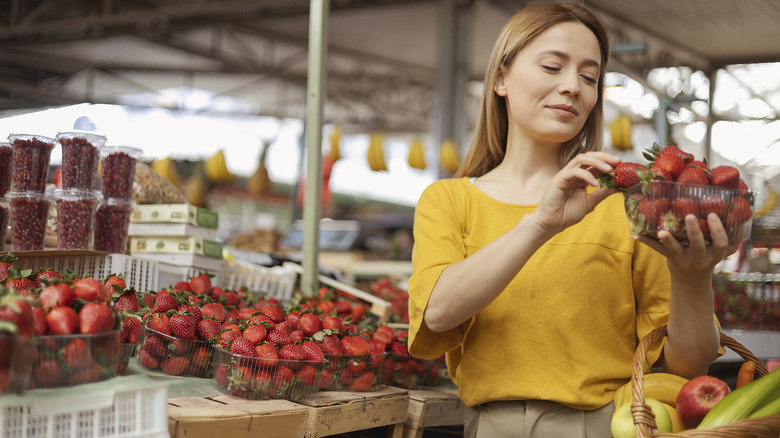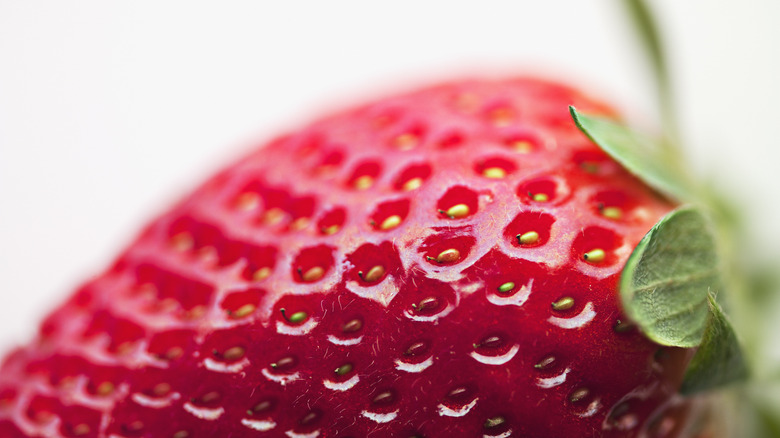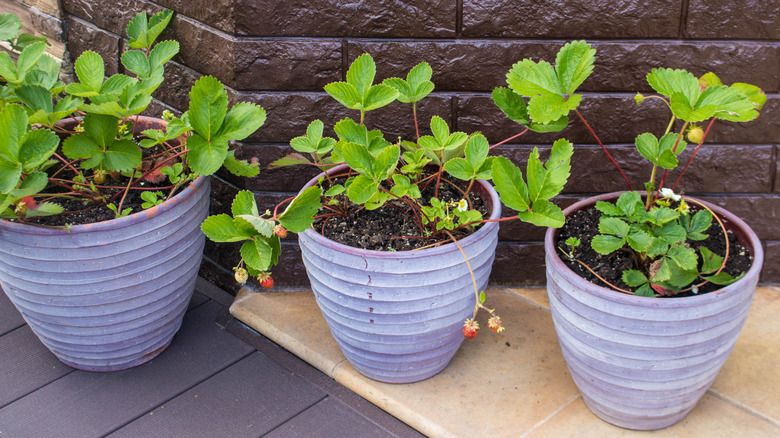Can You Grow Strawberry Plants From Store-Bought Produce?
There is nothing sweeter in the summertime than plucking freshly ripened produce from your own garden and enjoying the fruits of your labor. Strawberries are one of the easiest and tastiest fruits to grow at home, and with this perennial returning year after year, you'll never be left without berries again. Strawberry plants can be started in a few different ways, including using the very strawberries on sale at your local grocery store. There are approximately 200 seeds per strawberry, and yes, you can plant them to cultivate strawberry plants from scratch. With each plant growing around a quart of produce each season, just one store-bought strawberry can leave you with more than you can eat.
Not only are you saving money by using seeds already at your disposal but there is something precious about growing from the smallest seeds into flourishing plants. It may be time-consuming and tedious to extract the minuscule seeds and prepare them for planting, but a process that is well worth the effort. Strawberries are true to seed, which means you can expect to produce berries that look very similar to the parent. But it's important to remember that store-bought fruit are often hybrids and have been altered to grow bigger and brighter, so your homegrown berries will likely be smaller in size. However, undoubtedly just as delicious.
Growing strawberries from store-bought fruit
As you begin growing your strawberry plants, keep in mind that you likely won't see any berries produced for at least a year. You also cannot simply plant an entire strawberry and expect it to grow. The rotting fruit won't allow healthy germination, and if planted outside, you can count on the squirrels digging it up. Instead, you must extract the seeds individually by mashing or blending the strawberry. Once a puree has formed, strain the seeds from the pulp and give them a good rinse. After the seeds are isolated and cleaned, they will need to dry out over a week or two. Then, it will be time to put them through cold stratification, which is crucial to successful germination. Place the seeds in a container and allow them to rest in the fridge or freezer for four to six weeks.
When removing the seeds from the fridge, don't open the container until it has wholly warmed to room temperature. Now, it's finally time to plant the seedlings in starter pots. With how tiny they are, you won't want to bury them more than 1/4 to 1/2 inch deep and should water them with a mister to avoid water pressure moving or damaging the seeds. Cover the starters to keep the soil moist, and expect germination to take two to four weeks. As you see sprouts appear, remove the top cover and allow fresh air to reach the plants.
Caring for newly planted seeds
After germination has started and little sprouts are popping out of the soil, you'll want to move them into bigger pots, where they will continue to grow for six weeks until it's time to begin transporting them outdoors. To keep your strawberry plants from going into shock and dying, they will need to go through hardening, the process of slowly adapting to outside conditions. Place the plants outside, still inside their pots, in small increments each day, gradually increasing the amount of time they spend outdoors. Transplantation can occur once you feel confident that the plants have adapted to the climate. Ideally, strawberries should be planted as early in spring as possible and immediately after the final frost. This could be as soon as February for warmer locations, and for colder climates, around March or April.
Plant your strawberries outside in aerated, acidic soil, about two feet apart, and in a sunny location. You should give them about an inch of water a week, less if it has rained. Compost and fertilizer can boost growth with needed nutrients but should only be applied about a month after planting them outside. Fertilizer can be routinely applied once every few weeks, but be cautious not to overfertilize. Overfertilization can result in stunted growth, burned leaves, and a wilting plant. With the proper care, you could be picking ripe berries within a year from seed to harvest.


